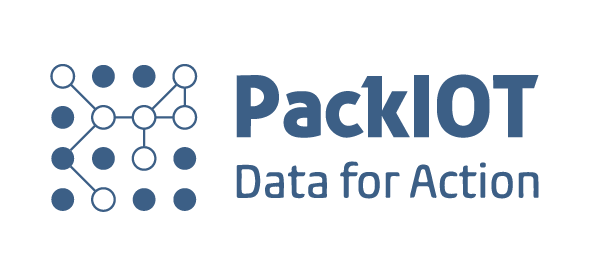By Mariana Costa, Marketing Specialist at PackIOT
A lot of questions have been raised regarding the capacity that Europe has to adapt to the revolution of Industry 4.0 and in the packaging industry in particular. In this blog post we will go over the four main topics to cover this subject
- Opportunities of Industry 4.0
- Challenges Europe is facing to adopt Industry 4.0
- Context in the packaging industry regarding Industry 4.0
- The next steps to boost the adoption of 4.0 technologies
According to the study done by Interreg Europe on Industry 4.0, the industrial sector has been seeing a great development due to the adoption of new digital technologies, materials and processes. The Industry 4.0 is progressively becoming a priority for policymakers in Europe. It can present itself as an impulse to productivity gains, redefine the whole industrial production model and potentially having a major impact on manufacturing employment.

Nevertheless, there is a very interesting scenario to be analyzed. Between 2007 and 2017, the EU economy has experienced a decline from 20.1% to 19.6% of the relative contribution of industry. Besides, the share of the industry also ranges from 30% in Ireland and Czech Republic to under 10% in Luxembourg and Cyprus (Eurostat, 2017). This decline raises questions about the capacity that the EU has to fully adapt to the Industry 4.0 and take initiatives in that direction.
1_Opportunities
On the bright side, we have a huge opportunity here to “increase productivity, shift economics, foster industrial growth and modify the profile of the workforce” (BCG, 2015). Besides, according to Boston Consulting Group, there is another very optimistic metric pointing at a productivity boost estimated in an increase in revenue by €110 billion over the next 5 years, a great indicator for the European industry (European Commission, 2015).
Another very interesting possibility is how the Industry 4.0 can motivate the re-shoring of industries. This is the process that brings production and manufacturing activities back to the company’s country of origin (Scalabre, 2016). It is based on the idea that labour costs will no longer be the main source of competitive advantages but knowledge and technology will.
2_Challenges
On the other hand, we can’t ignore the challenges that will come with the implementation of new techniques of Industry 4.0. Besides the big question surrounding cybersecurity in the cloud ecosystem, one of the main overall challenges is the lack of digital and organizational maturity to implement technological solutions.
A lot of manufacturing companies still don’t have an after-sales department and the concept of “machine as a service”. This would be crucial as it would turn the focus to data analysis, data security, performance management, remote diagnosis and open possibilities to augmented reality.
A common feeling among the industry is also the hesitation to implement 4.0 technologies. This can be explained by the lack of demand or understanding on the customer side. The implementation of 4.0 technological solutions will generate costs that can reflect in the price of the machine (and packaging). The customer needs to be able to see through these lens and identify the additional benefits that will come with these innovations.
With Industry 4.0 we are considering the disruption of a wide range of sectors from agriculture to the automotive industry and logistics (Brynjolfsson and McAfee, 2014). With that comes the risk automation poses to high structural unemployment by decreasing the demand for some human skills.
3_Packaging and Industry 4.0 in Europe
When we switch our focus to the packaging Industry specifically, a study on Industry 4.0 in the packaging industry, in which manufacturers from Austria, Germany and Switzerland participated, shows a very similar scenario. Around 70% of the manufacturers do not meet the necessary digital skills and 60% aren’t familiar with the concept of Industry 4.0.
Still, half of the managers are expecting that Industry 4.0 will be implemented in their factory within two years allowing production to be on a real-time data basis. To add to this, 80% agree that it is important that the activities inside factories start becoming more digitized – from the planning and production control to the machine manufacturing processes of packaging.
The challenge of cybersecurity is no different when looking at the packaging industry specifically. It presents a barrier to the comprehensive introduction of 4.0 technologies in factories. A study by PAC explores the topic of “Internet Of Things” in which very interesting conclusions were shared. It is noted that 73% of IT and business decision-makers (manufacturing and transport industry) in Austria, Germany and Switzerland would give priority to invest in security over spending money on sensors and networks. A lot of concerns have been raised regarding the vulnerability of manufacturing facilities. This is totally understandable as higher networking is correlated with a higher risk for cyber-attacks. For this reason, the progressive implementation of digitalization should come hand-in-hand with IT security innovative solutions.
4_The Next Steps
The reality of Industry 4.0 in Europe puts an extra pressure on policymakers. There is a necessity to ensure different instruments and design different responses for the new times we are living. These should include:
- the discussion of how to increase new-firm entries and growth of firms that are carriers of new technologies.
- increase productivity in established firms that face difficulties to upgrade technologically.
- SMEs don’t have the same funding capacity to adhere to 4.0 technologies when compared to larger firms and its implementation will require re-skilling and training workers to new technologies.
There is a low adoption rate of SMEs and a spike in competition outside the European Union. This might be a great opportunity that Europe if falling behind if immediate action is not taken for future gains and development.
This is a shift happening right now that will unfold during the next years for a lot of companies, transforming significantly their value chains. Throughout this process it is a priority to make sure the top management positions recognize the importance of the topic, place it on their agendas and prioritize it within companies.




